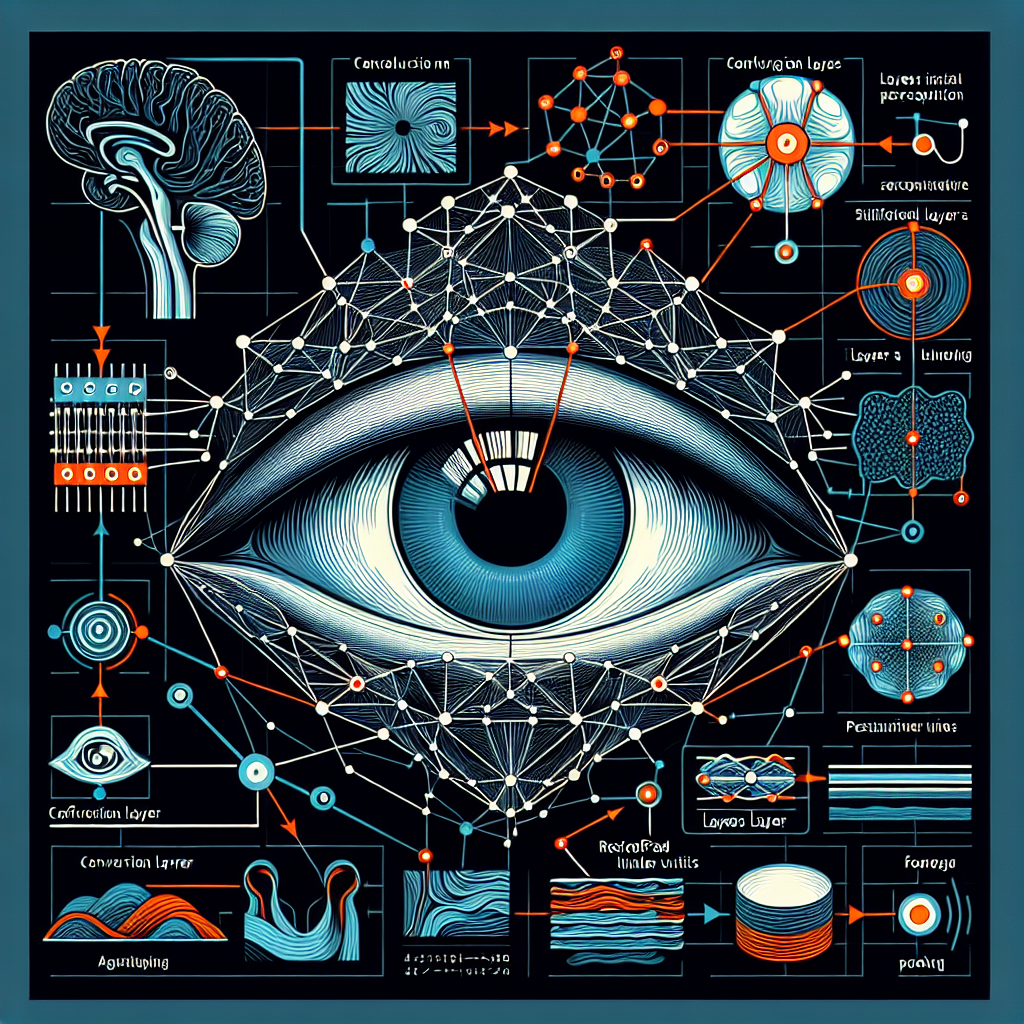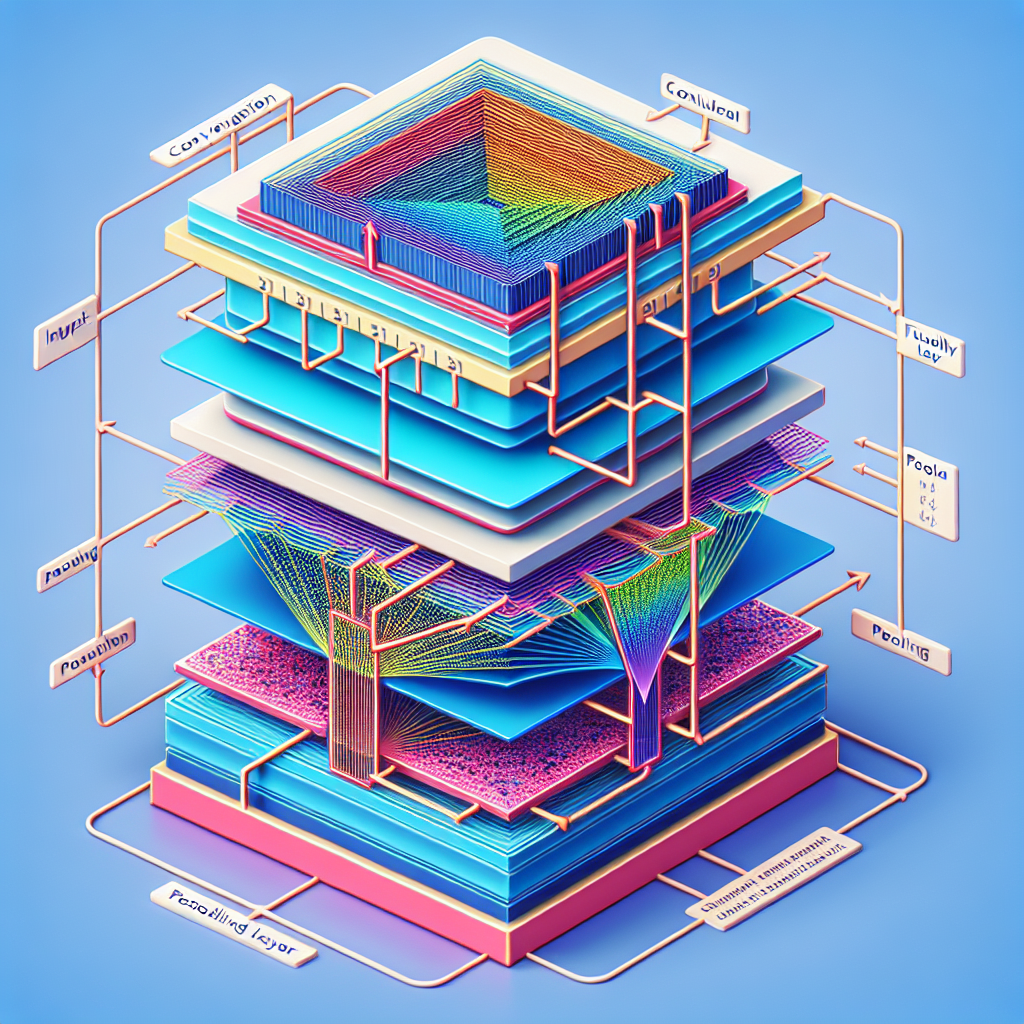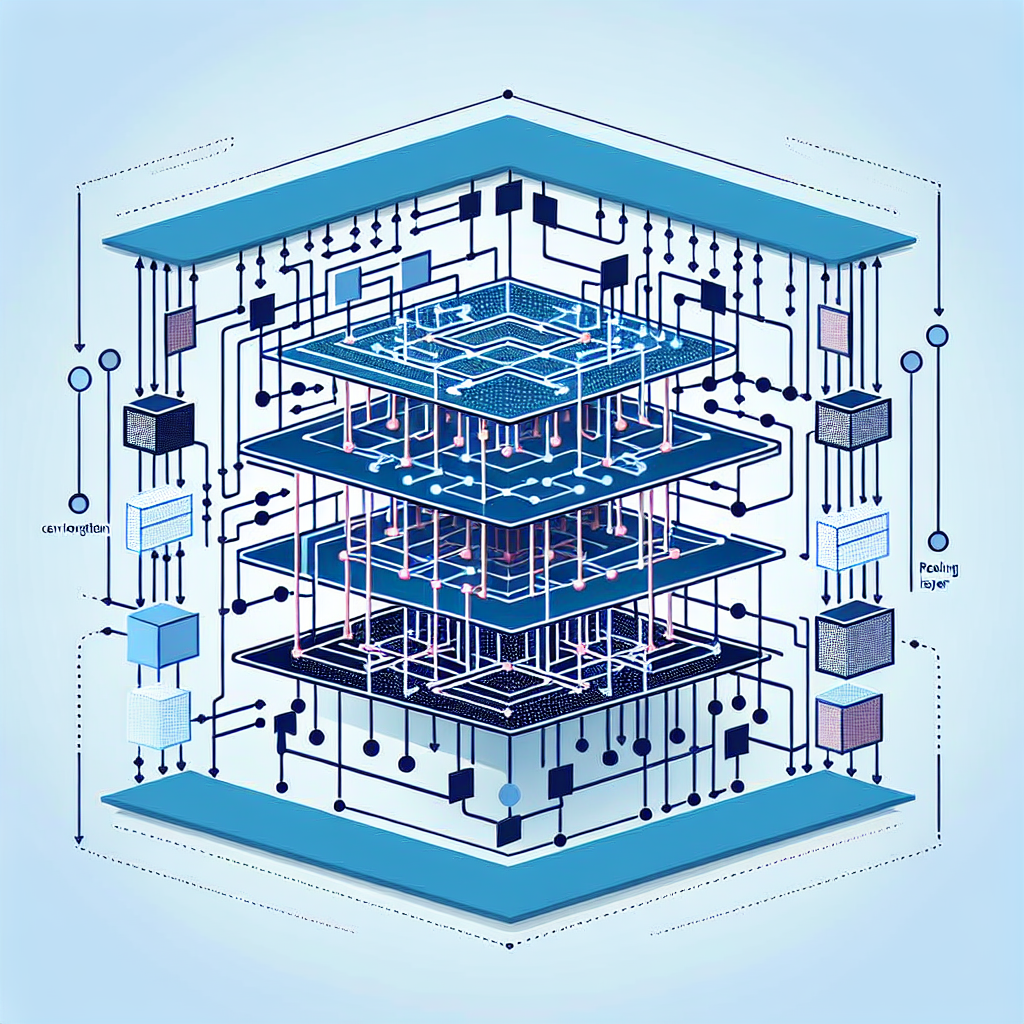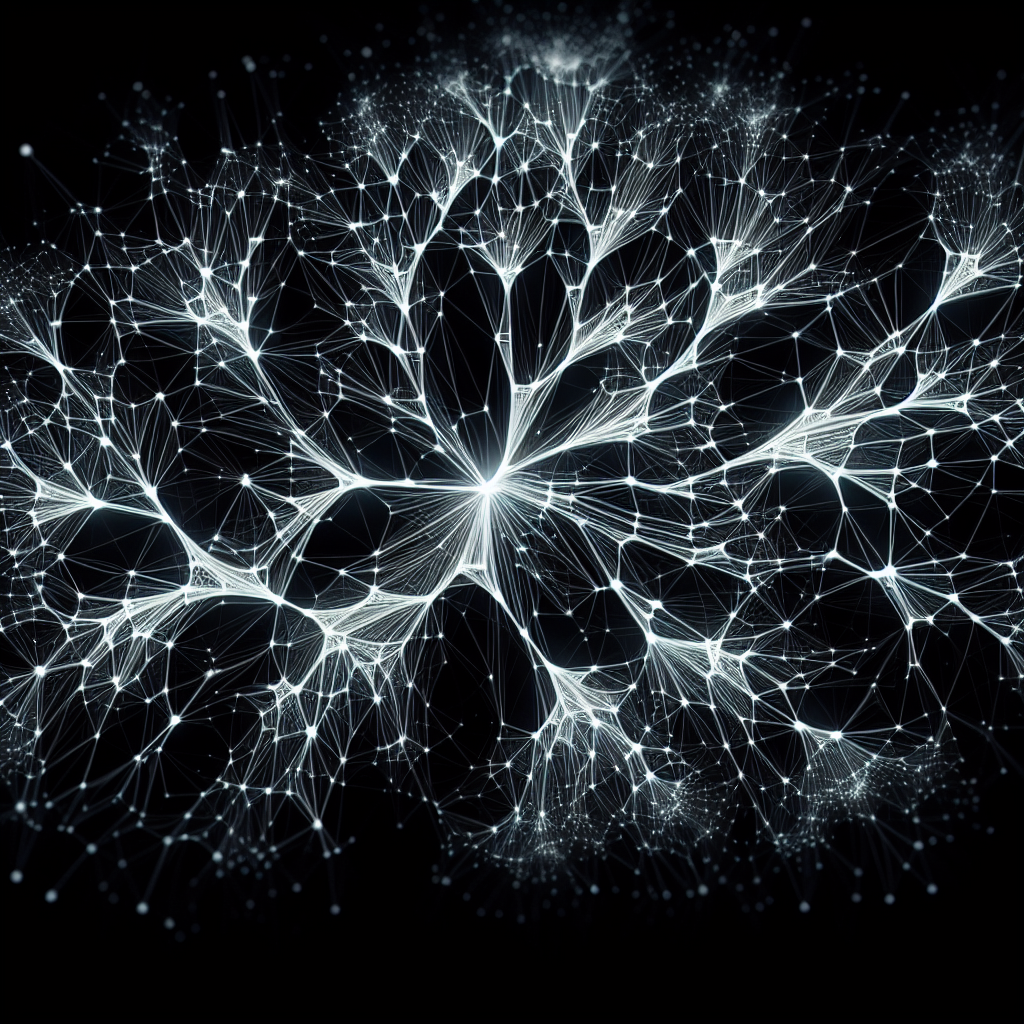Have you ever wondered what a convolutional neural network is? In the world of artificial intelligence and machine learning, convolutional neural networks are a crucial tool that allows computers to recognize and understand visual data, just like humans do. These networks are specifically designed to analyze and process images, making them an essential component in various fields ranging from computer vision to self-driving cars. In this article, we will explore the concept behind convolutional neural networks and get a glimpse into how they work their magic in deciphering visual information. So, let’s take a closer look at this fascinating technology and discover the power of convolutional neural networks together.

Overview of Convolutional Neural Networks
A Convolutional Neural Network (CNN) is a powerful type of deep learning algorithm that is primarily used for image recognition and processing. It is specifically designed to process data with a grid-like structure, such as images, by mimicking the way the human brain analyzes visual information. CNNs have revolutionized various fields, including computer vision, natural language processing, and more.
Definition
A Convolutional Neural Network is a type of deep learning algorithm that consists of multiple interconnected layers, each with a specific function. These layers work in a hierarchical manner to extract essential features from input data. CNNs are known for their ability to automatically learn and identify patterns and structures within images, making them ideal for tasks such as image classification, object detection, and even natural language processing.
Function
The main function of a Convolutional Neural Network is to process and analyze visual data, such as images or video frames. It achieves this through a series of layers that perform different operations on the input data. These operations include convolution, pooling, and fully connected layers. By applying these operations, CNNs can extract important features from the input data and make predictions or classifications based on those features.
Advantages
Convolutional Neural Networks offer several advantages over traditional machine learning algorithms when it comes to image processing tasks. One major advantage is their ability to automatically learn and extract relevant features from the input data, eliminating the need for manual feature engineering. CNNs are also very effective at handling large amounts of data, making them suitable for complex tasks. Additionally, they can capture spatial dependencies in images, allowing them to recognize objects in various orientations and sizes. Overall, CNNs have proven to be highly efficient and accurate in many real-world applications, making them a valuable tool in the machine learning field.
Architecture of Convolutional Neural Networks
The architecture of a Convolutional Neural Network plays a crucial role in its ability to process and analyze visual data. It consists of several interconnected layers, each with its own function. Understanding the different layers of a CNN is essential for comprehending how it functions.
Input Layer
The input layer of a CNN is where the raw input data, such as an image, is fed into the network. Pixels of the image are typically represented as numerical values, and the dimensions of the input layer correspond to the dimensions of the image. The input layer serves as the starting point for the network’s computation and allows the subsequent layers to extract meaningful information from the input data.
Convolutional Layer
The convolutional layer is the core component of a Convolutional Neural Network. It applies a set of filters or kernels to the input data in order to extract specific features. Each filter is typically a small matrix of weights that is applied to a local region of the input data. By convolving these filters across the entire image, the convolutional layer can detect patterns and structures of varying complexity. This process is similar to the way the human visual system identifies edges and shapes.
Pooling Layer
The pooling layer follows the convolutional layer and aims to reduce the spatial dimensions of the input data while preserving the important features. Pooling can be done using various methods, such as max pooling and average pooling. Max pooling selects the maximum value within a specific region, while average pooling calculates the average value. By downsampling the data, the pooling layer helps to make the representation more manageable and invariant to small shifts or distortions in the input.
Fully Connected Layer
The fully connected layer, also known as the dense layer, is responsible for making predictions or classifications based on the features extracted by the previous layers. It takes the outputs from the previous layers and connects every unit to every unit in the subsequent layer. This layer performs a non-linear transformation on the input data, incorporating complex relationships between the features. The final output of the fully connected layer represents the predicted class or value.
Convolutional Operation
The convolutional operation is a fundamental process in Convolutional Neural Networks that enables the extraction of relevant features from input data.
Kernels and Filters
Kernels, also referred to as filters, are small matrices of weights that are convolved over the input data in the convolutional layer. Each kernel specializes in detecting a specific feature or pattern within the input. These can range from simple features like edges or corners to more complex structures like textures or objects. By applying different kernels at different stages of the neural network, CNNs can learn and recognize increasingly intricate patterns.
Stride
Stride refers to the number of pixels the kernel moves across the input data during convolution. A stride of 1 means the kernel moves one pixel at a time, resulting in a dense output. On the other hand, a larger stride value reduces the spatial dimension of the convolved output. Stride affects the spatial resolution of the feature maps and can influence the ability of the network to detect features of different sizes.
Padding
Padding is a technique used in CNNs to preserve spatial information during convolution. It involves adding additional pixels around the input data, typically with zero values. The purpose of padding is to ensure that the size of the output feature maps remains the same as the input size, or to achieve a desired spatial resolution. Padding can be helpful in capturing features near the borders of an image or preventing the loss of information during convolution.
Pooling
Pooling is an essential component of Convolutional Neural Networks that helps reduce spatial dimensions while retaining important features.
Max Pooling
Max pooling is a pooling technique that downsamples the input data by selecting the maximum value within a specific region. It is commonly used in CNNs to reduce the spatial size of the features, effectively making the representation more compact. Max pooling also helps in achieving a degree of invariance to translation, meaning that the network can recognize patterns even if they are shifted or slightly distorted within the input data.
Average Pooling
Average pooling is another pooling technique that downsamples the input data by calculating the average value within a specific region. It functions similarly to max pooling, but instead of selecting the maximum value, it takes the average. Average pooling is helpful when spatial resolution is less important, and it can be used as an alternative to max pooling in certain scenarios.

Activation Functions
Activation functions are crucial in Convolutional Neural Networks as they introduce non-linearity and determine the output of a neuron.
Sigmoid Function
The sigmoid function is a widely used activation function in neural networks, including CNNs. It takes a real-valued input and maps it to a value between 0 and 1. The sigmoid function is useful for introducing non-linearity, which allows the network to model complex relationships between features. However, it is prone to saturation, where the gradient becomes very small in the regions far from its mean. This saturation can lead to the vanishing gradient problem, hindering the learning process of the network.
ReLU Function
ReLU (Rectified Linear Unit) is one of the most commonly used activation functions in CNNs. It sets all negative input values to zero and leaves positive values unchanged. ReLU is computationally efficient, easy to optimize, and helps alleviate the vanishing gradient problem. Furthermore, ReLU functions as a sparsity-inducing activation, meaning that it promotes a sparse activation of neurons and can improve the interpretability of the network’s results.
Hyperbolic Tangent (Tanh) Function
The hyperbolic tangent, or tanh, function is another activation function used in CNNs. It is similar to the sigmoid function but maps the input to a value between -1 and 1. Like the sigmoid function, tanh introduces non-linearity to the network. However, because the range of tanh is symmetric around zero, it can output both positive and negative values. Tanh is useful in certain scenarios where negative values are relevant, and it has similar issues with saturation as the sigmoid function.
Training Convolutional Neural Networks
Training a Convolutional Neural Network involves several key steps, from dataset preparation to selecting appropriate loss functions and optimizers.
Dataset Preparation
Preparing the dataset is a crucial step in training a CNN. It involves collecting and preprocessing a suitable dataset with labeled examples for the desired task. The dataset should ideally be diverse and representative of the target domain. Preprocessing steps may include resizing images to a consistent size, normalizing pixel values, and splitting the dataset into training, validation, and testing sets.
Loss Functions
Loss functions play a vital role in training CNNs by quantifying the difference between predicted and actual outputs. The choice of an appropriate loss function depends on the specific task at hand. For example, common loss functions for image classification tasks include categorical cross-entropy and binary cross-entropy, while mean squared error may be used for regression tasks. The loss function guides the network’s learning process by providing a measure of how well it is performing.
Optimizer
Optimizers are algorithms that update the weights of a CNN to minimize the loss function during the training process. They use mathematical techniques, such as gradient descent, to iteratively adjust the weights based on the gradients of the loss function. Popular optimizers used in CNNs include stochastic gradient descent (SGD), Adam, and RMSprop. The choice of optimizer depends on factors such as the size of the dataset, network architecture, and computational resources.

Applications of Convolutional Neural Networks
Convolutional Neural Networks have found success and widespread applications across various domains and tasks.
Image Classification
One of the primary applications of CNNs is image classification, where the network is trained to assign accurate labels or categories to images. By extracting and learning features from images, CNNs can achieve high accuracy in classifying objects, animals, scenes, and more. Image classification has numerous practical applications, such as content filtering, medical diagnosis, and autonomous vehicles.
Object Detection
CNNs have revolutionized the field of object detection by enabling accurate and real-time identification of objects within images or video streams. By leveraging their ability to recognize and localize features, CNNs can identify multiple objects, draw bounding boxes around them, and classify them into specific categories. Object detection has wide-ranging applications, including surveillance systems, autonomous robotics, and augmented reality.
Natural Language Processing
Although primarily designed for processing visual data, CNNs have also been successfully applied to natural language processing (NLP) tasks. By treating textual data as images, where words are represented as vectors, CNNs can extract features and patterns from text, enabling tasks such as sentiment analysis, text classification, and machine translation. CNN-based NLP models have shown improved performance and efficiency compared to traditional techniques.
Challenges and Limitations of Convolutional Neural Networks
Despite their impressive capabilities, Convolutional Neural Networks are not without their challenges and limitations.
Computational Complexity
One significant challenge of CNNs is their computational complexity, especially for larger networks and high-resolution inputs. The convolution and pooling operations, which involve sliding windows across the data, can be computationally intensive. Training deep CNN architectures can require substantial computational resources, such as high-performance GPUs, and can take a considerable amount of time. Optimizing CNNs for efficient processing remains an active area of research.
Limited Translation Invariance
While CNNs are effective at recognizing local patterns and structures, they may have limited translation invariance. This means that slight shifts or distortions in the input data can affect the network’s ability to recognize objects or features accurately. Although pooling layers can help mitigate this limitation to some extent, it remains an ongoing challenge in the design of CNN architectures.
Lack of Explainability
A common limitation of CNNs, and deep learning models in general, is the lack of explainability. The complex and interconnected nature of CNN architectures makes it challenging to interpret the reasoning behind their decisions. They are often considered black-box models, providing accurate predictions without detailed explanations. This lack of interpretability can hinder their adoption in domains where explainability is crucial, such as healthcare or finance.

Future Developments in Convolutional Neural Networks
As technology and research advance, several exciting developments are shaping the future of Convolutional Neural Networks.
Attention Mechanisms
Attention mechanisms have gained significant attention in recent years due to their ability to improve the focus and interpretability of CNNs. Attention mechanisms enable the network to selectively focus on relevant parts of the input data, allowing for more efficient and context-aware feature extraction. They have shown promising results in tasks such as image captioning, machine translation, and visual question answering, and are expected to play a significant role in the future development of CNNs.
Capsule Networks
Capsule Networks, proposed as an alternative to traditional CNNs, aim to address some of the limitations of CNN architectures. Capsules are groups of neurons that encode various instantiation parameters of an object, such as position, scale, and orientation. By modeling relationships between capsules, these networks can better handle complex structures, generalization across variations, and provide better interpretability. Capsule Networks are still in the early stages of development but hold great potential for advancing the capabilities of CNNs.
Generative Adversarial Networks
Generative Adversarial Networks (GANs) have emerged as a powerful framework for generating realistic and high-quality images. GANs consist of two networks: a generator and a discriminator. The generator learns to generate synthetic data, such as images, while the discriminator learns to distinguish between real and fake data. GANs have shown remarkable success in generating images, and their integration with CNNs opens up exciting possibilities for tasks like image synthesis, data augmentation, and anomaly detection.
Conclusion
Convolutional Neural Networks have revolutionized the field of computer vision and have made significant contributions to various other domains, including natural language processing. Their ability to automatically learn and recognize patterns makes them a valuable tool for tasks such as image classification, object detection, and more. Despite their challenges and limitations, CNNs continue to evolve, with ongoing research focused on improving efficiency, interpretability, and performance. As technology continues to advance, Convolutional Neural Networks will remain an integral part of the machine learning landscape, propelling us towards new advancements and applications. Their importance in machine learning cannot be overstated, as they continue to push the boundaries of what is possible in the realm of artificial intelligence.

